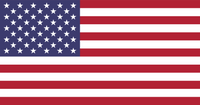Best Survival Knife: Common Man vs Common Sense
So you’re thinking about buying a survival knife. With all the choices we are faced with today it can be a daunting task to say the least. How thick, how long? Full tang, rat tang? What grind should I get, and stainless or carbon? Well I am not claiming to be an expert. I also am not going to push any one ideal upon you like it’s the gospel. I am however going to lay the facts on the table and let you make a rational, educated decision, so that your first survival knife purchase won’t leave you with a bad taste in your mouth.
SURVIVAL KNIFE – GRINDS
Grinds. A lot can be said for the many different grinds you can have on a survival knife these days. Each has its good and bad points, and none is reallyperfect over the other. More so, it’s the grind that works for the job you’re doing at the moment that matters. A Scandinavian, or scandi grind is a great grind for most if not all small woods chores, from carving tent stakes to making fuzz sticks. No other grind gives you the control, or the keenness of a scandi grind.
With that being said, it’s NOT the best grind for ALL chores in the woods. It is sharp, sharper than most every grind out there, but it isn’t the best for chopping. If hit against a hard object in a chopping motion, a scandi grind can chip out and roll easier than say a convex grind. In the same instance, a convex edge isn’t as easy to shave wood or make fuzz sticks with either. A survival knife with a primarily flat grind is great for chopping in most cases, and excels at batoning and splitting wood. Most well built survival knives will have a flat grind with a shallow bevel to give overall decent use, and strength. But there is no perfect edge for total overall use in the woods.
SURVIVAL KNIFE – SHAPE
Shape. Most if not all knives aimed at survival enthusiasts are built with a drop point blade. It’s a good strong tip design that allows a decent amount of prying, and digging to be done without fear of popping the tip off. Another good option is a spear point design as it gives good tip strength and keeps the point in line with the centerline of the handle to allow the blade to be used as a drill for making holes in fire boards and such.
Clip point survival knives are usually to weak for heavy use in the woods, and are designed more for penetration of soft tissue than wood. The one exception to this rule would be the K-Bar. It is a heavy blade with a clippoint that has seen many years of hard use in the hands of soldiers from many branches. Its thick carbon steel blade is easy to sharpen, and does a good job of most bush craft tasks.
SURVIVAL KNIFE – HANDLES
Handle material. While bone and antler looks good on a blade, nothing could be worse for long-term use in the woods. You want a material that will absorb some shock from chopping, and or batoning; not rot, or break up in the cold and the damp alike; and offer a good grip when wet with viscous fluids, or mud and muck.
I prefer diamond-wood scales on most of my survival knives because it’s a resin impregnated wood that offers great resistance to fluids, yet still retains great grip-ability. Another option would be micarta, or G10 scales. Both of these are a resin based material made of fiberglass, paper, linen, and/or canvas material. They offer great resistance tofluids, and grip as well as offer the ability to shape the handles better to the hand. While wood is the cheapest material in most cases, some companies are using micarta in the place of it, with no change in price.
SHOULD A SURVIVAL KNIFE BE STAINLESS OR CARBON STEEL
Stainless or carbon steel survival knife? It doesn’t matter. Now before you rip your keyboard out and start typing a mad reply to that statement, let me explain. IF you know you are not going to have to strike a piece of flint on the back of your knife to start a fire…it just doesn’t matter. I have some stainless knives that throw better sparks off of my ferro rod than some carbon steel blades. As long as the back of the knife is at a sharp angle to the blade, it will throw sparks from most, if not all ferro rods.
The advances that have been made in metallurgy as of late have produced some stainless blades that rival the carbon bad boys in ease of sharpening, and edge holding. I own a few really amazing stainless blades, and don’t hesitate to carry them with me in the woods when I hunt. BUT, and here is where I regain your trust, I prefer carbon steel over stainless for a few reasons. Remember, we are trying to remain the common man here.
Carbon steel blades are usually cheaper than stainless of the same size and design. Carbon steels are easier to sharpen in the field should you lose your gear. I’m not saying you can’t sharpen a stainless blade on a rock, just that the results willbe better with a carbon blade. Now after all that, I still haven’t answered the age-old question. What’s the perfect survival knife for use in the woods? Nobody can answer that question but you. What you do, and how you do it willbe the factor.
DIFFERENT BRANDS OF SURVIVAL KNIVES
The pathfinder knife is one of the best knives I have had the pleasure to use in the woods. But even it isn’t perfect. It has a good scandi grind, so it’s good at most wood working tasks. Its gotplenty of belly so it will do OK at skinning, and it has enough weight to be a decent chopper. Notice I didn’t say it excelled at any of these tasks, just that it was OK at all of them.
The TBT1 (Tom Brown Tracker1) is another example of this situation. Mora knives are loved around the world for a lightweight and cheap option for woods use, but they lack the weight to do any chopping, and the strength to do heavy batoning. The above mentioned KBar is built for combat. But it’s not as suited for drilling into wood as it is flesh. It makes a great knife for processinggame, but reaches limits when processing wood.
One great option for a common man is to get a Mora knife, and either a small hand axe, or a small folding saw. With either combination you can process wood for shelter and or fire, and still clean fish, process game, and do other smaller camp chores with ease. I’m not saying this is the perfect end all setup, but for a common man’s kit, you would be well suited for any adventure you may set out for.
As time and money permits, upgrade your knife to the KBar, orif you want to save for something grand, the Pathfinder. Both knives, when paired with an axe or saw, will be more than capable of sustaining you for months on end should the need arise. Of course this is just the tip of the iceberg when talking about sharpened tools, and entire books can, and have been written on the subject. Instead this is a sampling of things I have observed thought the years, and what has and hasn’t worked for me.
THE FINAL DECISION
No one can sell you a knife. The knife sells itself to you. Pick afew up. Hang out with some buddies and ask them to let you use the knife they carry. The more survival knives you work with, the better you can answer the question ofwhich is right for you. Until then,stay sharp, and stay safe.
By Ken Seal, “Common Man vs Common Sense”, Self Reliance Illustrated, page 37, Premier Issue – Edited by The Pahfinder Store



